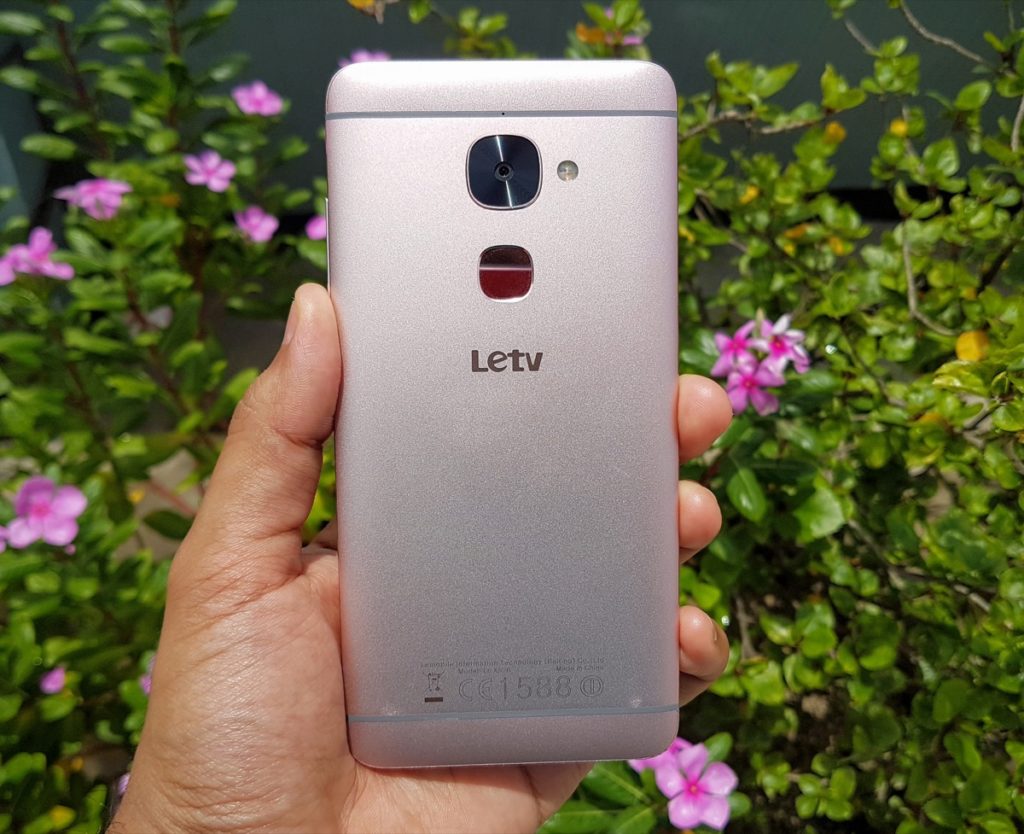LeEco, formerly Letv, is a fairly new entrant in the smartphone market, but the company has made a name for itself in China and India thanks to their blitzkrieg marketing. In India, the company recently launched its budget handset, the LeEo Le 2, to take on the massively popular Redmi Note 3 from Xiaomi.
On paper, the LeEco looks better than its competitors in every way, but how does the phone perform in real life? Let’s find out in our review.
Design, Build Quality, and Display
Like with almost every other phone in the sub-15k price range in India, the Le 2 also features a unibody aluminium build. However, compared to the Redmi Note 3 and the Moto G4 Plus, I like the design of the Le 2 the most. The handset’s top-notch build quality perfectly complements its design, which might not be unique, but is at least not as chubby as the Redmi Note 3.
The overly large camera cutout at the rear sits right above the relatively smaller fingerprint scanner sensor, with the two-tone LED flash located at the right. The top and bottom of the rear also sport the usual antenna lines. At the front, the 5.5-inch Full HD display sits between the top and bottom bezels that are almost equal in size. The bottom bezel also houses the capacitive navigation buttons that can be customised to a certain extent in EUI. The top of the handset houses an IR blaster, while the bottom houses a USB Type-C port and a mono speaker (don’t be fooled by the two speaker grilles). The volume and power buttons are located on the right, while the SIM card tray is on the left.
The 5.5-inch Full HD display on the Le 2 is one of the handset’s strong point. It offers great viewing angles, contrast levels and gets decently bright as well. However, there are three issues that plague the display: first, the black bezels surrounding it; second, the display flexes when pressed; and third, the sunlight eligibility is not up the mark as the display is barely visible in direct sunlight.
The first issue is very common on many other Chinese phones, and it helps in giving a wrong impression of the amount of bezel space surrounding the display. As for the second issue, it is not a huge deal as it does not affect the build quality or usability of the phone in any way. LeEco has already issued a statement on the matter and says that the display flexes because of a protective layer that they have installed below it.
Unlike the Redmi Note 3 and almost every other phone in this range, the Le 2 does not feature a microSD card slot. Instead, it only comes with 32GB of internal storage out of which around 23GB is available to the end user.
Software
The Le 2 runs on Android 6.0 Marshmallow out of the box, though it is completely overshadowed by LeEco’s EUI skin. The skin does not look like iOS, but some features definitely seem to be influenced by it. For example, there is a Control Centre in the OS that offers one access to commonly used system settings. This Control Centre replaces the Quick Settings panel of Android completely, and instead of being found in the notification shade, it sits inside the Recent Apps view. I am not particularly fond of this change and wish LeEco at least offered an option in EUI to put system toggles in the notification panel.
Like with other Chinese OEMs, EUI is a very heavy skin. If not for the Google Play Store and other Google apps, it would be tough for anyone to figure out if the handset even runs on Android. This is not particularly a bad thing since EUI offers plenty of customization options that power users will appreciate. On the flip side, many first time users can feel a bit overwhelmed with so many features, especially when they open the Settings menu.
Performance and Battery Life
Under the hood, the Le 2 is powered by an octa-core Snapdragon 652 chipset clocked at 1.8GHz and 3GB RAM. On paper, the Le 2 is the fastest phone available in India inside the Rs. 20,000 ($300) range. It is even faster than the Redmi Note 3 that sports the hexa-core Snapdragon 650 chipset. The raw horsepower of the chipset definitely shows its grunt as the Le 2 despite running the heavy EUI skin runs smoothly even while running heavy games and applications. However, the UI does tend to stutter every once in a while, which clearly shows some optimisation issues with it.
Unlike the Moto G4 Plus, the Le 2 does not heat up when pushed hard like when playing games like Asphalt 8 or when using the camera app for an extended period of time.
With a 3000mAh battery and the efficient Snapdragon 652 chipset, the Le 2 easily lasts a day of heavy usage.The handset does not last as long as the Redmi Note 3 on a single charge, but you can easily extend the battery life to almost two days using the various power saving features included in EUI. On an average, I managed to squeeze around 1.5 days of usage from the phone on a single charge, with the device easily lasting two days during weekends and on particularly light days.
Camera
The Le 2 comes with a 16MP F/2.0 shooter at its rear with Phase Detection AF. The camera setup is similar to the one found on the Redmi Note 3, but their is quite a bit of performance difference between the two. In daylight, photos taken from the Le 2 come out looking slightly bland and neutral, and they lack any kind of punch. As the amount of available light reduces, the Le 2’s 16MP shooter struggles to take decent photos. In extreme low light, the photos from the phone are hardly of any use.
Disappointingly, the Le 2 despite the presence of a powerful Snapdragon 652 chipset lacks an Auto HDR mode. Thankfully, it does have the option to record videos in 4K resolution, though the videos are completely ruined by the heavy compression artifacts.
The Le 2 offers almost the same or slightly lower imaging performance than the Redmi Note 3, and its camera setup is considerably behind the excellent 16MP shooter of the Moto G4 Plus.
Conclusion
For its price, the Le 2 is a great phone. You will be hard-pressed to find a better phone within Rs. 11,000 in India. The phone does have some niggling build quality issues, and the lack of a 3.5mm audio jack is going to cause a lot of inconvenience to its potential buyers. Then there is also the lack of a microSD card slot on the handset — a feature that is a commonplace in handsets of this range. If you can get over them, the Le 2 is a great buy.
When compared to Xiaomi’s Redmi Note 3 though, things are a bit different. The Redmi Note 3 has turned out to be incredibly popular in India selling in excess of 1 million units within a few months of its launch. At Rs. 12,000, the Redmi Note 3 is just a grand costlier than Le 2 and offers a better camera, battery life, and system performance. Until and unless you cannot justify spending that extra grand, the Redmi Note 3 should be your first choice between the two handsets. LeEco still has to prove their worth in terms of providing regular software updates to their devices and there are plenty of horror stories related to their after sales service as well.





























